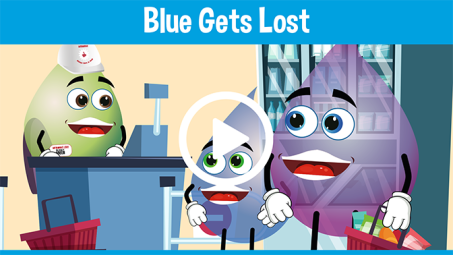Nurturing Creativity in Early Years Through Mindful Drawing Ideas
In the bustling journey of parenthood, there's an unspoken desire embedded within every parent's heart – to nurture and cultivate the boundless creativity harbored within their child's mind. The early years of a child's life serve as the foundation for their future endeavors, shaping their perspectives, skills, and most importantly, their creativity. One powerful tool that parents and educators can employ to foster this creativity is through mindful drawing ideas for kids.
Drawing is not merely about putting pencil to paper; it's a gateway to a world where imagination knows no bounds. In this blog, we'll explore how embracing mindful drawing activities in the formative years can ignite a lifelong passion for creativity while promoting mental well-being.

The Importance of Early Years in Creative Development
The early years of a child's life are akin to a blank canvas, waiting to be filled with vibrant strokes of experiences, learning, and creativity. It is during this period that their brains are highly malleable, absorbing knowledge and forming connections at an astonishing rate. Studies have shown that engaging children in creative activities during their early years significantly enhances cognitive development, problem-solving skills, and emotional intelligence.
Drawing, being one of the most accessible and instinctive forms of self-expression, plays a pivotal role in nurturing creativity from a tender age. It encourages children to explore their thoughts, feelings, and perceptions in a non-verbal manner, transcending the limitations of language.
Cultivating Mindfulness Through Drawing
Mindfulness, the practice of being fully present in the moment without judgment, complements the creative process seamlessly. When applied to drawing, mindfulness allows children to immerse themselves fully in the act of creation, fostering a sense of calmness and focus.
Introducing mindfulness into drawing sessions can be as simple as guiding children to pay attention to their breath as they sketch, encouraging them to observe the intricate details of their surroundings, or prompting them to express their emotions through colors and lines. By integrating mindfulness into drawing activities, children not only enhance their artistic skills but also develop invaluable tools for self-regulation and stress management.
Mindful Drawing Ideas for Early Years
Nature Walk Sketching: Take children on a nature walk and encourage them to observe the beauty of the outdoors. Provide them with sketchbooks and pencils, and invite them to capture the sights that inspire them – be it a blooming flower, a fluttering butterfly, or the rustling leaves of a tree.
Emotion Doodles: Emotions can be complex for young children to articulate verbally. Invite them to express their feelings through doodles and drawings. Ask questions like, "How does happiness look like in colors?" or "What shape would you use to depict anger?" This not only helps them understand and manage their emotions but also fosters empathy and self-awareness.
Storybook Illustrations: After reading a story together, encourage children to create their illustrations based on the narrative. This not only reinforces comprehension skills but also allows them to exercise their imagination and creativity freely.
Collaborative Murals: Set up a large piece of paper or a whiteboard and invite children to collaborate on a mural. Provide them with different drawing materials and let their collective creativity unfold. This activity promotes teamwork, communication, and the joy of creating something together.
Mindful Mandala Coloring: Introduce children to the meditative practice of coloring mandalas. Mandalas are intricate geometric designs that promote relaxation and focus. Encourage children to color mindfully, paying attention to each stroke and breath.
The Impact of Mindful Drawing on Mental Well-being
Beyond enhancing creativity, mindful drawing can have profound effects on children's mental well-being. In today's fast-paced world, where stress and anxiety are prevalent even among young children, providing them with tools to navigate their emotions is paramount.
Mindful drawing serves as a form of art therapy, allowing children to express themselves freely and release pent-up emotions in a healthy manner. It provides them with a safe space to process their thoughts and feelings, leading to improved self-esteem and resilience.
Moreover, the act of creating art releases endorphins, the body's natural feel-good hormones, promoting a sense of joy and fulfillment. By incorporating mindful drawing into their daily routines, parents and educators can help children cultivate a positive mindset and a deeper connection with themselves and the world around them.
Conclusion
In the journey of fostering creativity in early years, mindful drawing emerges as a powerful ally, guiding children towards self-discovery, expression, and emotional well-being. By embracing mindful drawing ideas, parents and educators can unlock the innate creativity within every child, laying the groundwork for a future filled with imagination, innovation, and endless possibilities.
As we witness the strokes of a child's pencil dance across the canvas of their imagination, let us remember the profound impact that mindful drawing can have on their lives – shaping not only their artistic endeavors but also nurturing their minds, hearts, and souls for years to come. Let us cultivate a culture where creativity flourishes, one mindful drawing at a time.



Comments
Post a Comment